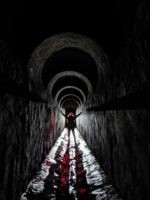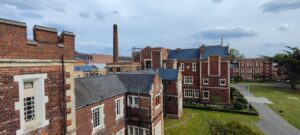Abandoned London: Cane Hill Asylum Air Raid Shelter | Urbex
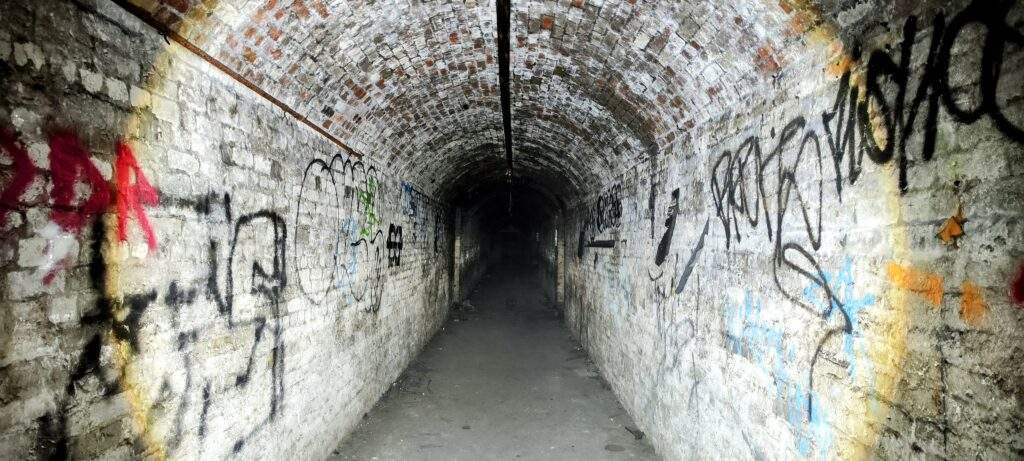
Hidden in woodland and dug into a hill in the grounds of Cane Hill lunatic asylum, on the outskirts of London sits this air raid shelter. Surrey Council designed and commissioned four subterranean shelters during WWII to protect the local residents. In 2008 the mental hospital was shut down and demolished and today a new housing development takes its place.
Surrey Council designed the shelter to be three parallel tunnels with two interconnecting tunnels. The soil from digging the tunnels was piled to create a bank in front of the entrances to protect the shelter from any blasts. The capacity of the shelter was originally meant to be 1,500 people but the builders hit chalk and had to stop digging further. The shelter was completed in October 1941 with a capacity of 720.
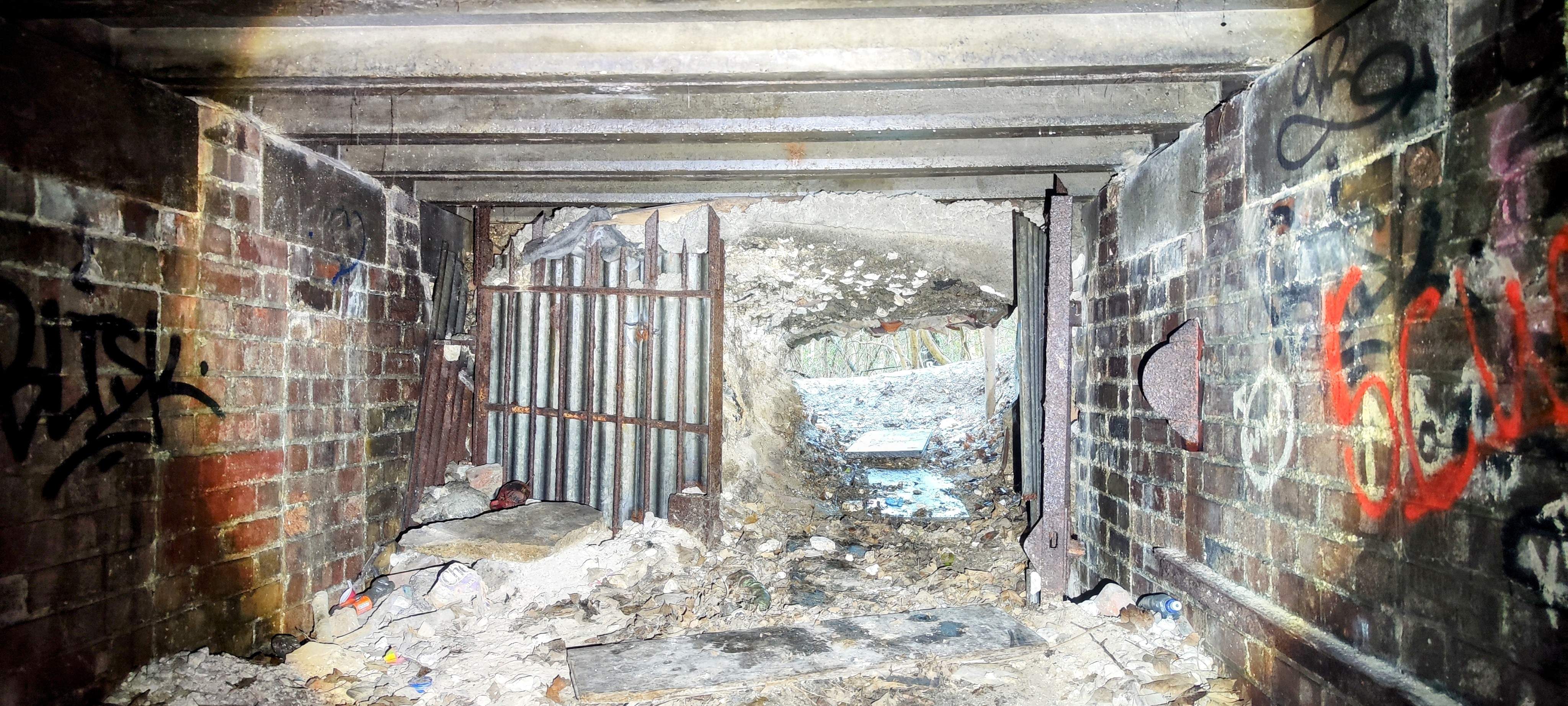

After WWII the site was bought from the council by Cox, Hargreaves and Thomson. The company made lenses for telescopes and cine-cameras. The tunnels were the perfect spot for the lens company as they are a constant temperature of 23.3°C which meant that glass would not expand or contract throughout the year. Also, the long straight corridors were perfect for test focussing. Even though the site was cold and damp which caused many electrical faults, for 30 years the lens company made the tunnels their home. It seems that Cox, Hargreaves and Thomson wired a fridge backwards to make an air-conditioning unit! This didn’t seem to solve their problems though as they left the tunnels in the mid 70s and the company shut down in 1978. British Pathe filmed their work in the tunnels which can be seen here. Since then it was used as a dump for old VW car parts and then sealed by the local council.

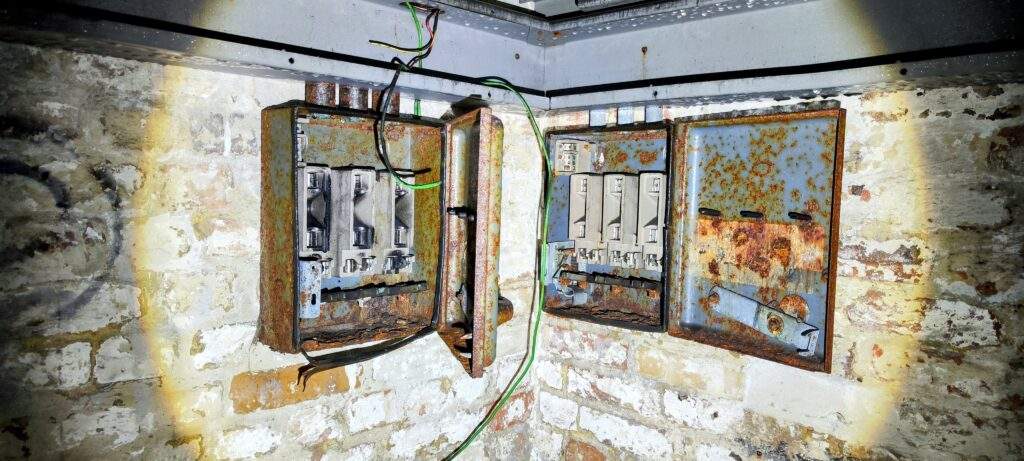
Reports over the years show that the council seal up the site and locals reopen it again. With our eyes peeled we could just make out the entrance in the wooded area and it was a jump over a small fence to get in. Simple enough. However, with the pressure of the busy traffic around us and the wet terrain, my boot slipped from the fence and I was left dangling with the fence piercing a hole in my trousers. Once unhooked I hobbled away as quickly as I could with my dignity left far behind.
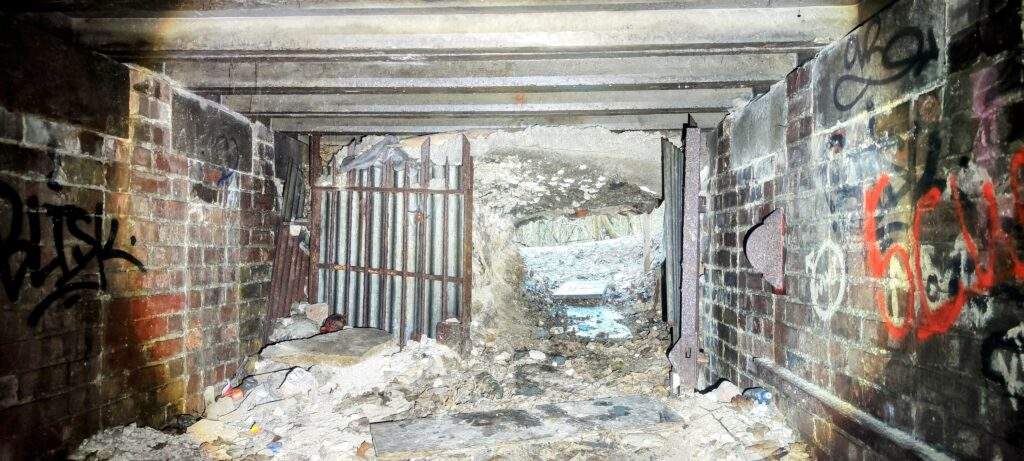

The entrance looks a bit daunting, it is one you have to carefully crawl through, whilst getting very chalky knees. This doesn’t last long enough to feel unmanageable bit it was a tight squeeze and might put other explorers off. The deep shelter is large one which made the crawling and squeezing worthwhile. There is quite a lot of rubbish just inside the entrance but once you get into the main tunnels the artefacts that are left behind do tell a story of the post-war history of the place.

The tunnels are lined with brick and graffiti and are set out in a grid formation. They are fairly easy to navigate with a few side rooms and inlets on your way around. The tunnels are partitioned in sections and one section had even been bricked up. Previous explorers have opened this up and also tastefully named the hole as well. Old car and bike parts have been left throughout the tunnels. There is also lots of old equipment as well, including tractor parts and a lawn mower. It is also easy to find the spot where the diggers found chalk and could not extend the tunnels further. This wall was particularly damp and it’s easy to see why the lens workers complained about their working conditions.
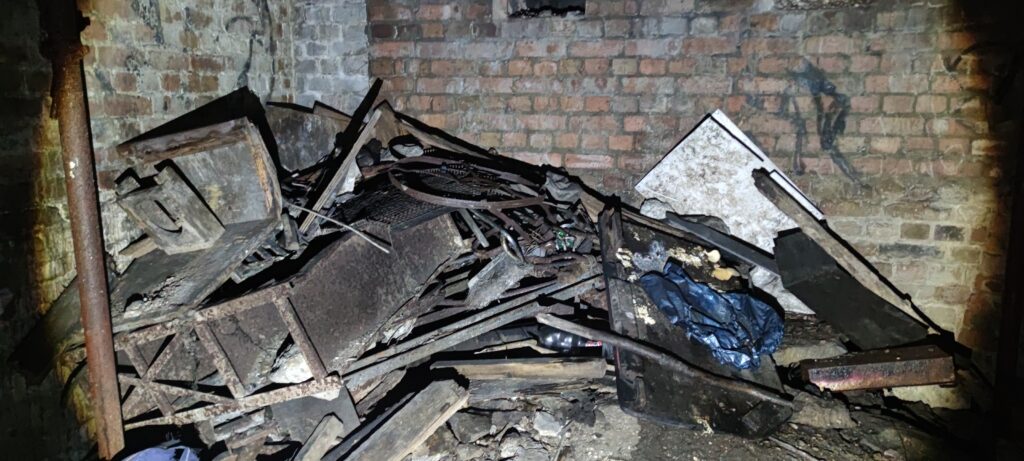


Last Updated on 19 December 2024 by Michael

